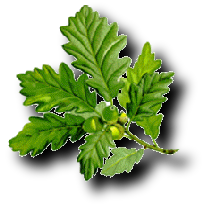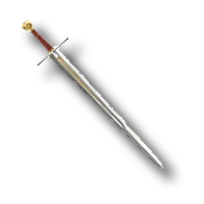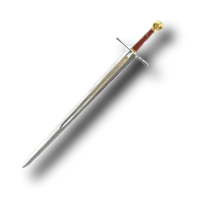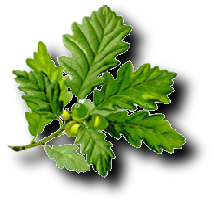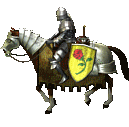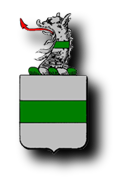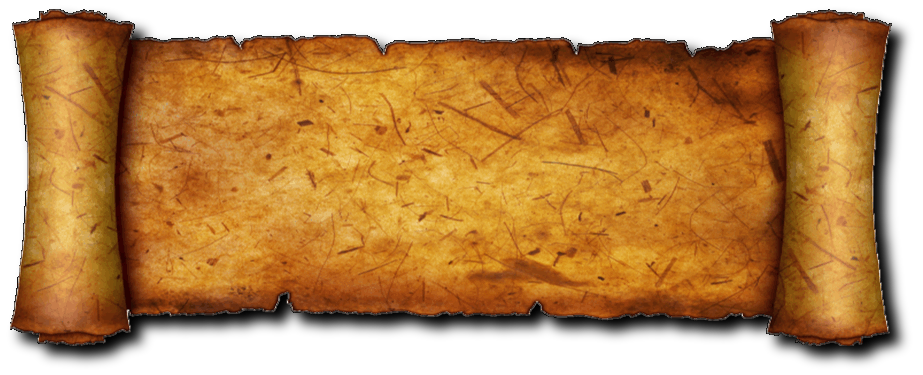
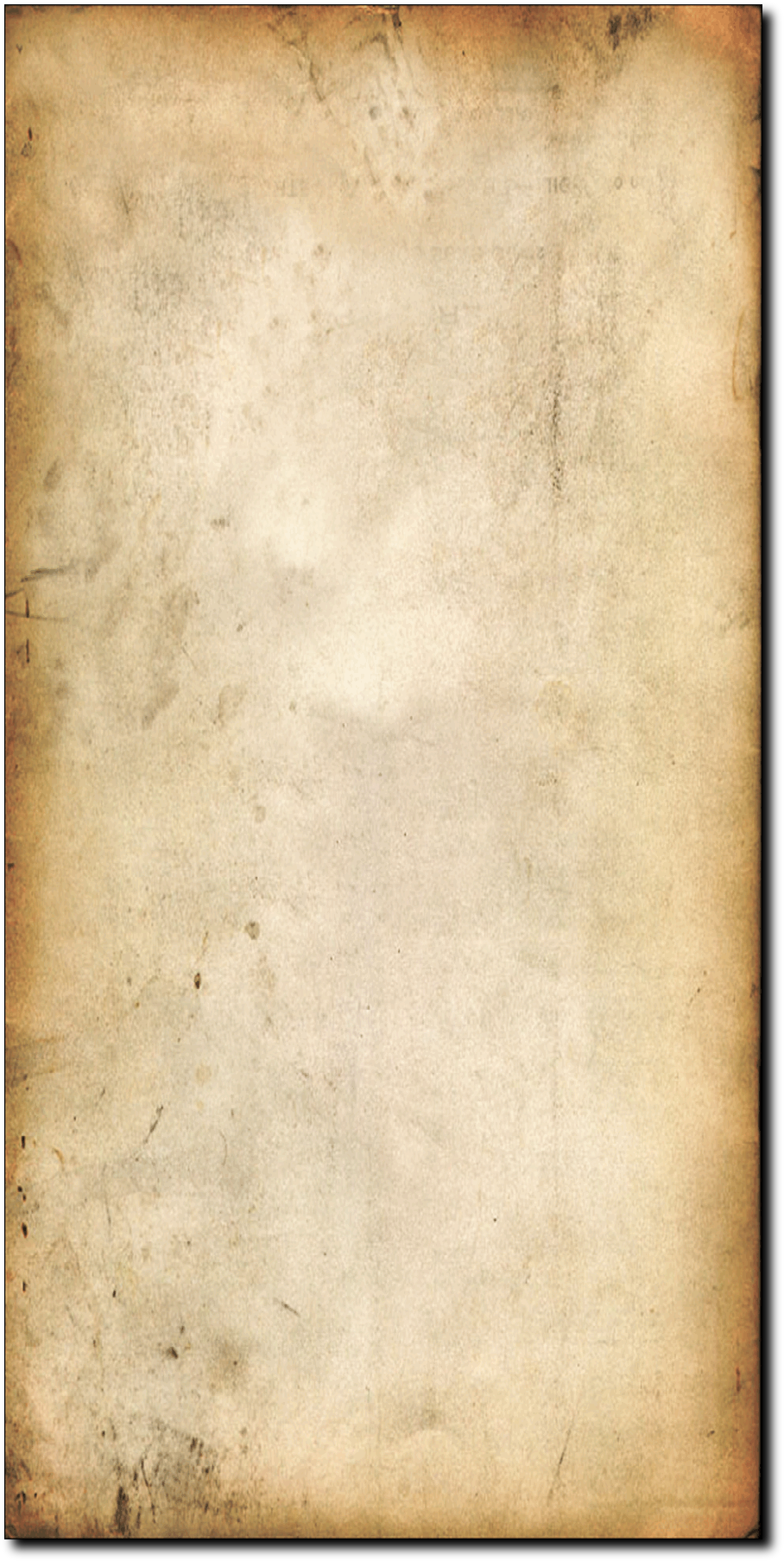
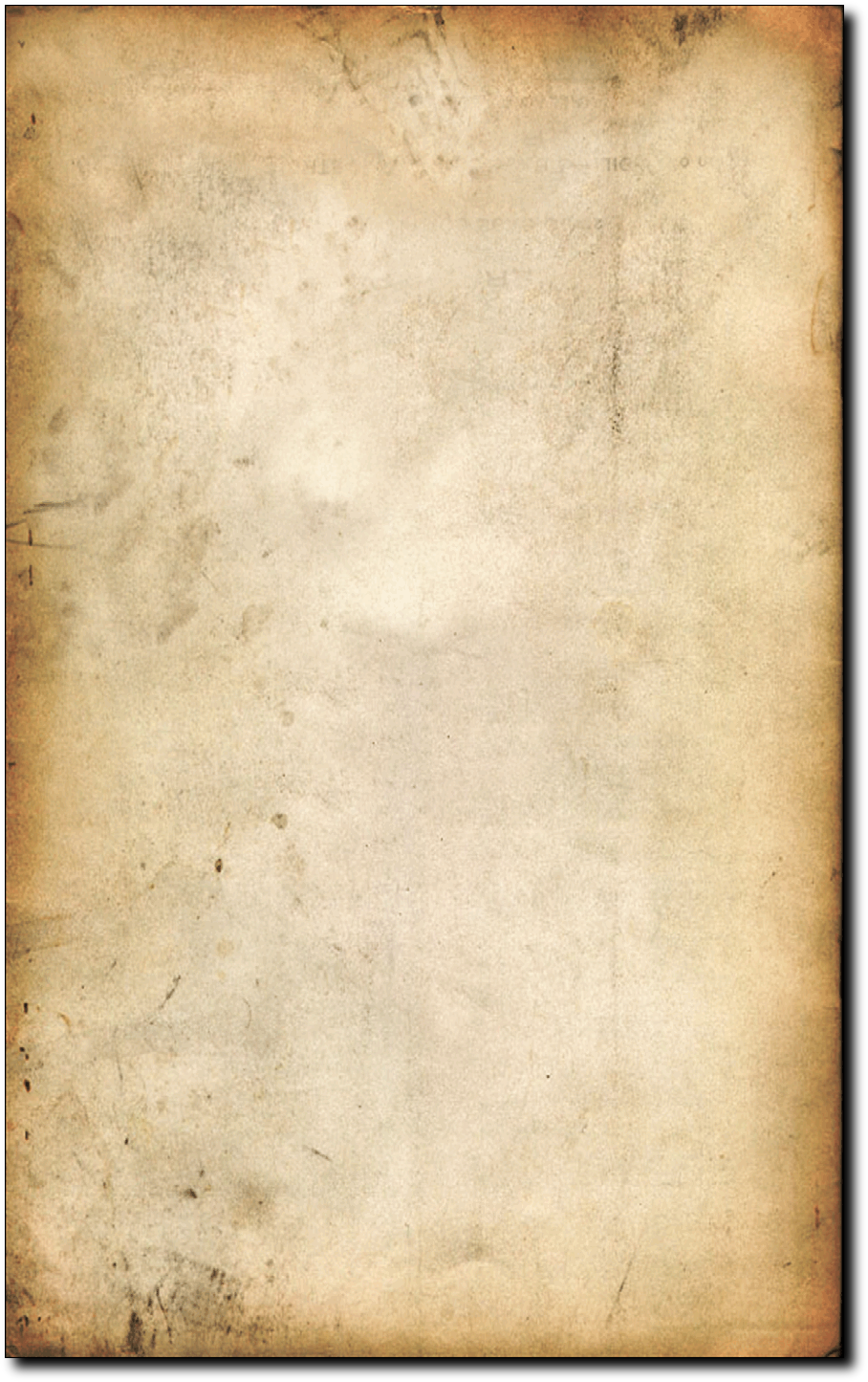
The House with the two Gatehouses.
If one follows the sinuous Waal dike from Leeuwen to Druten, along the inside of the dike overgrown with reeds and past the small narrow ponds that lie on the broad lands between the dike and the river, one passes, about halfway on the righthand side and close to the boundary between the two municipalities, the location of the former ‘Huys’ (house) at Boven Leeuwen.
At the end of a little lane, shaded by centuries old beech trees, a small stone bridge seems to float over the remnants of the old castle moat, which allows access to the old Huys. This is all that is left of this very historic site. Unfortunately, this small place confirms again how much history and beauty has been destroyed because of the wanton destructiveness that occured in the previous century, to which this castle has also fallen victim, and is now lost. With a bit of imagination one can see how this great citadel -which at Leeuwen there certainly was – must have been a captivating site in this landscape, protected by a mighty dike and surrounded by thriving fuit trees. One can only wish that, despite the miserable remains, something remains preserved for the decendants of the family.
Part of one of the two gatehouses has remained of 'het Huys' at Leeuwen, which is why this castle was also refered to as the citadel 'Leeuwen met de twee voorborchten' (Leeuwen with the two gatehouses). In particular, the name 'met twee voorborchten' (with the two gatehouses) was used to distinguish between this citadel and a second citadel, the remains of which were also found here in Leeuwen. This is a much older castle called 'Leeuwen op den berg' (Leeuwen on the hill). One can suppose that this castle was somewhat elevated to be called 'Leeuwen op den berg'.
In 1680 this castle was called “an old ruined house” that afterwards completely disappeared.
On the Waal dike at Boven Leeuwen is one of the gatehouses of the mighty castle Leeuwen nearby some very formidable chestnut trees, to which a large part of a farm was later added. The bridge over the moat dates from a later time period.
The whole village of Leeuwen once belonged to Castle ‘Leeuwen op den berg’, so this citadel is considered to be the home of the Van Leeuwen or Van Lewen family. The last inhabitants were probably the men of Baexen, between 1500 and 1580. That’s why the castle was also known in that period as the B’aex. Not much is known of the castle “Leeuwen op den berg’, although the location of the citadel was in the eastern part of the village, about halfway along the Molenstraat in Boven-leeuwen.
However, we will concern ourselves with the previously mentioned “Huys Leeuwen met de twee voorborchten’, for which fortunately history has left us more information.
The part of the gatehouse that remained intact, and that after some necessary repairs can still be used for accommodation, was in the past probably used as a coach house. Of course, the gatehouses were really designed to be part of the defences of the castle; they were built to withstand against possible attack. The lords of this ‘Huys’ at Leeuwen had particular reasons for this, as the castle was subject to sieges in the bitter conflict between the Heeckerens and the Bronckhorsten. These, for the most part, seem to have taken place in and around Tiel.
There is no doubt that the remaining part of the gatehouse has been restored many times.
The foundations of the gatehouse, will, without a doubt, be found in the immediate vicinity, wherein which once the incredibly strong gate was raised.
From the location of the moat in particular, which has partly been saved, the site of the defences can more or less be determined. In any case, the surroundings of the castle are such that the atmosphere of long ago times can be imagined. However, as one strolls along the canals covered with Duckweed, it can be somewhat difficult to imagine the tension of the ancient times as the history of the castle unfolds.
The first inhabitants of this ‘Huys’ at Leeuwen belonged to the family Druten, whose family castle was located on the Heersweg, which travels a little way past the ‘Huys’ at Leeuwen from the Waaldijk and leads to the village of Druten. The large expansion of the family Druten, and the on the other hand small area of the domain of Druten, made it necessary for many family members to move to other lands. This is what Willem and Emmerik van Druten, who are mentioned in the annals of 1319 and 1321, thought.
These young men were wilful and enterprising, and as the sons of one of the younger brothers of the then lord of the castle of Druten, not having any chance of becoming lords of the castle themselves, they set out to find a place for a new settlement, something for which the plains west of Druten were particularly well suited. A place that had a spectacular view of the mighty Waal caught their eye, and of course a citadel at that spot would also be able to control the roads that lead to the west. It is also thought possible that, where the new castle would be built, there was already a settlement, which would have made the choice much easier.
In about 1325, ‘het Huys’ at Leeuwen was built. Willem and Emmerik van Druten were well aware that the defences of the castle would need to be strong and able to provide resistance against continuous attack, not the least of which were the wars against the Dukes of Gelderen.
It was thus thought that Castle Leeuwen became the strongest castle in the lands between the Maas and Waal rivers, and could certainly compete with castles outside of the area in its ability to resist sieges. With its two gatehouses, one pointing in the direction of Wamel and the other to the south, this castle was considered unconquerable.
There is therefore some doubt about the claim that the castle was taken and plundered by Reinald van Gelder in the conflicts between the brothers Reinald and Eduard van Gelder.
The castle of Leeuwen must have been much stronger than the castles in Horssen and Appeltern, as they did fall into the hands of Duke Reinald.The area that belonged to the domain Leeuwen – which is mentioned in the annals of 1377 and 1371 and was bound to the north by the Waal, to the east by the domain Druten, to the south by the domain Puiflijken and to the west by ‘Leeuwen op den berg’. There was a thick, low-lying forrest between ‘het Huys’ at Leeuwen and its allied castle of Druten, which was proved by the until recently still standing forrest and shrubbery.
A somewhat romantic story has been passed down through the ages regarding the death of Emmerik (or Heijmeric) van Druten in the year 1354. That was the time when the war in Gelre between the Heeckerens and the Bronkhorsten was at its most intense. As we know, the war regarding the succession in Gelderland played a significant role here. The claims of Reinoud (or Reinald) III as duke of Gelre and count of Zutphen were disputed by his younger brother Eduard. Reinald gave support to the Heeckerens, after which the Bronkhorsten sought support from Eduard, who in turn set themselves against Reinald, because they would not concede to him the lands that he claimed which were part of his fathers inhertitance.
As the area of Gelre spanned both sides of the banks of the Waal, so the land of Maas and Waal became involved in the bitter fraternal war, mainly because – as has been said – the war was mostly confined to the area of Tiel, whose strong citadel – as well as most of the cities – had allied itself to Eduard. The castle lords of Leeuwen, as had the majority of the aristocracy, had at first allied themselves to Reinald.
But the cruelties of Reinald seemed to have been the reason why the castle lords of Leeuwen turned against him. On August 24, 1350 he ordered that the tower of the St Walburg church be set alight. In this tower 145 citizens of Tiel had sought sanctuary, and they died a horrible death.
Willem, lord of Leeuwen, very quickly became a leader in Eduards camp, and Emmerik evidently also became one of Eduard’s loyal supporters.
Reinald, furious at this betrayel, invaded the land of Maas and Waal. Although there was a lot of heavy fighting near castle Leeuwen, and despite repeated sieges by Reinald’s troops, the stronghold withstood all attacks. However, when Emmerik van Druten in 1354 attended the Pentecost service at the village church of Leeuwen, a band of Reinald’s thugs suddenly forced their way into the church. Emmerik, realizing that they had come for him, sought protection at the altar, where the priest tried to intervene. The thugs took no notice of him.
Making threats upon the priest, on the high altar of the village church of Leeuwen, and in the arms of the priest, they stabbed Emmerik van Druten to death with their lances.
Only by change it seems, his brother Willem was spared a similar fate. On the drawbridge of their castle, on the way to the church service, Willem sprained his foot. Maybe because it was too difficult to walk,, or maybe because some thought it was a bad omen, Willem stayed home while Emmerik went to his last, fateful, service.
By commiting such a heinous crime, Reinald lost more supporters. It appears that in June of that same year, Eduard retook the various strongholds in the lands of Maas and Waal that Reinald had temporarily held, in particular the castles of Horssen and Appeltern. Despite this, peace was not restored. At last, Eduard got the chance to defeat his brother at the decisive battle of May 25, 1361 on the ‘Strijdweerd’. This used to be known as ‘het Weidje’ on the Zandwijk side of Tiel. Reinald was thrown into prison and remained a prisoner at castle Nijenbeek for 10 years, till the death of Eduard I, whose excellant governance of the duchy at last brought peace and order to the area. After Eduards death in 1371, Reinald once again became duke, however he died that same year, and with that the reign of the house of Gelre came to an end.
We return for a little while to ‘het Huys’ at Leeuwen. Besides Willem and Emmerik, their father Arnold and his daughter Clementine also lived in the castle. After Arnolds death, the marriage of Clementine to Jan van Diewe-Aerschot (a knight from Brabant) in 1354 and the tragic death of Emmerik in the same year, it appears that Willem alone remained. It is therefore, that in the annals of 1377 and 1397, Willem is named as the only founder of the castle of Leeuwen.
With the substantial functions of councillor, judge and duke of Maas and Waal, Willem became one of the most interesting figures in the history of this area.
Only the descendents of Willem are known. Either by dowry or by inheritance, it is speculated that with the addition to the duchy of the lands of van Puiflijk, that his wife came from the family Van Puiflijk. The duchy of Leeuwen remained in the hands of the family Van Druten till the beginning of the 15th century. However, the wallpainting in the council chamber of Leeuwen that shows an impression of ‘het Huys’ at Leeuwen in 1732, proves that the castle was still a substantial fort for quite a few centuries.
Of the inhabitants of castle Leeuwen, after it had passed out of the hands of the family Druten, we can note that of Zweder van Boetselaer, who was councillor, duke and judge in about 1675, and whose name is not viewed with any sympathy by the catholic population of the area. The ‘papal cellar’ of castle Leeuwen is witness to the imprisonment of several priests from the Maas and Waal district and the Brabant countryside.
Bron/Source : Het Land tussen Maas en Waal.
If one follows the sinuous Waal dike from Leeuwen to Druten, along the inside of the dike overgrown with reeds and past the small narrow ponds that lie on the broad lands between the dike and the river, one passes, about halfway on the righthand side and close to the boundary between the two municipalities, the location of the former ‘Huys’ (house) at Boven Leeuwen.
At the end of a little lane, shaded by centuries old beech trees, a small stone bridge seems to float over the remnants of the old castle moat, which allows access to the old Huys. This is all that is left of this very historic site. Unfortunately, this small place confirms again how much history and beauty has been destroyed because of the wanton destructiveness that occured in the previous century, to which this castle has also fallen victim, and is now lost. With a bit of imagination one can see how this great citadel -which at Leeuwen there certainly was – must have been a captivating site in this landscape, protected by a mighty dike and surrounded by thriving fuit trees. One can only wish that, despite the miserable remains, something remains preserved for the decendants of the family.
Part of one of the two gatehouses has remained of 'het Huys' at Leeuwen, which is why this castle was also refered to as the citadel 'Leeuwen met de twee voorborchten' (Leeuwen with the two gatehouses). In particular, the name 'met twee voorborchten' (with the two gatehouses) was used to distinguish between this citadel and a second citadel, the remains of which were also found here in Leeuwen. This is a much older castle called 'Leeuwen op den berg' (Leeuwen on the hill). One can suppose that this castle was somewhat elevated to be called 'Leeuwen op den berg'.
In 1680 this castle was called “an old ruined house” that afterwards completely disappeared.
On the Waal dike at Boven Leeuwen is one of the gatehouses of the mighty castle Leeuwen nearby some very formidable chestnut trees, to which a large part of a farm was later added. The bridge over the moat dates from a later time period.
The whole village of Leeuwen once belonged to Castle ‘Leeuwen op den berg’, so this citadel is considered to be the home of the Van Leeuwen or Van Lewen family. The last inhabitants were probably the men of Baexen, between 1500 and 1580. That’s why the castle was also known in that period as the B’aex. Not much is known of the castle “Leeuwen op den berg’, although the location of the citadel was in the eastern part of the village, about halfway along the Molenstraat in Boven-leeuwen.
However, we will concern ourselves with the previously mentioned “Huys Leeuwen met de twee voorborchten’, for which fortunately history has left us more information.
The part of the gatehouse that remained intact, and that after some necessary repairs can still be used for accommodation, was in the past probably used as a coach house. Of course, the gatehouses were really designed to be part of the defences of the castle; they were built to withstand against possible attack. The lords of this ‘Huys’ at Leeuwen had particular reasons for this, as the castle was subject to sieges in the bitter conflict between the Heeckerens and the Bronckhorsten. These, for the most part, seem to have taken place in and around Tiel.
There is no doubt that the remaining part of the gatehouse has been restored many times.
The foundations of the gatehouse, will, without a doubt, be found in the immediate vicinity, wherein which once the incredibly strong gate was raised.
From the location of the moat in particular, which has partly been saved, the site of the defences can more or less be determined. In any case, the surroundings of the castle are such that the atmosphere of long ago times can be imagined. However, as one strolls along the canals covered with Duckweed, it can be somewhat difficult to imagine the tension of the ancient times as the history of the castle unfolds.
The first inhabitants of this ‘Huys’ at Leeuwen belonged to the family Druten, whose family castle was located on the Heersweg, which travels a little way past the ‘Huys’ at Leeuwen from the Waaldijk and leads to the village of Druten. The large expansion of the family Druten, and the on the other hand small area of the domain of Druten, made it necessary for many family members to move to other lands. This is what Willem and Emmerik van Druten, who are mentioned in the annals of 1319 and 1321, thought.
These young men were wilful and enterprising, and as the sons of one of the younger brothers of the then lord of the castle of Druten, not having any chance of becoming lords of the castle themselves, they set out to find a place for a new settlement, something for which the plains west of Druten were particularly well suited. A place that had a spectacular view of the mighty Waal caught their eye, and of course a citadel at that spot would also be able to control the roads that lead to the west. It is also thought possible that, where the new castle would be built, there was already a settlement, which would have made the choice much easier.
In about 1325, ‘het Huys’ at Leeuwen was built. Willem and Emmerik van Druten were well aware that the defences of the castle would need to be strong and able to provide resistance against continuous attack, not the least of which were the wars against the Dukes of Gelderen.
It was thus thought that Castle Leeuwen became the strongest castle in the lands between the Maas and Waal rivers, and could certainly compete with castles outside of the area in its ability to resist sieges. With its two gatehouses, one pointing in the direction of Wamel and the other to the south, this castle was considered unconquerable.
There is therefore some doubt about the claim that the castle was taken and plundered by Reinald van Gelder in the conflicts between the brothers Reinald and Eduard van Gelder.
The castle of Leeuwen must have been much stronger than the castles in Horssen and Appeltern, as they did fall into the hands of Duke Reinald.The area that belonged to the domain Leeuwen – which is mentioned in the annals of 1377 and 1371 and was bound to the north by the Waal, to the east by the domain Druten, to the south by the domain Puiflijken and to the west by ‘Leeuwen op den berg’. There was a thick, low-lying forrest between ‘het Huys’ at Leeuwen and its allied castle of Druten, which was proved by the until recently still standing forrest and shrubbery.
A somewhat romantic story has been passed down through the ages regarding the death of Emmerik (or Heijmeric) van Druten in the year 1354. That was the time when the war in Gelre between the Heeckerens and the Bronkhorsten was at its most intense. As we know, the war regarding the succession in Gelderland played a significant role here. The claims of Reinoud (or Reinald) III as duke of Gelre and count of Zutphen were disputed by his younger brother Eduard. Reinald gave support to the Heeckerens, after which the Bronkhorsten sought support from Eduard, who in turn set themselves against Reinald, because they would not concede to him the lands that he claimed which were part of his fathers inhertitance.
As the area of Gelre spanned both sides of the banks of the Waal, so the land of Maas and Waal became involved in the bitter fraternal war, mainly because – as has been said – the war was mostly confined to the area of Tiel, whose strong citadel – as well as most of the cities – had allied itself to Eduard. The castle lords of Leeuwen, as had the majority of the aristocracy, had at first allied themselves to Reinald.
But the cruelties of Reinald seemed to have been the reason why the castle lords of Leeuwen turned against him. On August 24, 1350 he ordered that the tower of the St Walburg church be set alight. In this tower 145 citizens of Tiel had sought sanctuary, and they died a horrible death.
Willem, lord of Leeuwen, very quickly became a leader in Eduards camp, and Emmerik evidently also became one of Eduard’s loyal supporters.
Reinald, furious at this betrayel, invaded the land of Maas and Waal. Although there was a lot of heavy fighting near castle Leeuwen, and despite repeated sieges by Reinald’s troops, the stronghold withstood all attacks. However, when Emmerik van Druten in 1354 attended the Pentecost service at the village church of Leeuwen, a band of Reinald’s thugs suddenly forced their way into the church. Emmerik, realizing that they had come for him, sought protection at the altar, where the priest tried to intervene. The thugs took no notice of him.
Making threats upon the priest, on the high altar of the village church of Leeuwen, and in the arms of the priest, they stabbed Emmerik van Druten to death with their lances.
Only by change it seems, his brother Willem was spared a similar fate. On the drawbridge of their castle, on the way to the church service, Willem sprained his foot. Maybe because it was too difficult to walk,, or maybe because some thought it was a bad omen, Willem stayed home while Emmerik went to his last, fateful, service.
By commiting such a heinous crime, Reinald lost more supporters. It appears that in June of that same year, Eduard retook the various strongholds in the lands of Maas and Waal that Reinald had temporarily held, in particular the castles of Horssen and Appeltern. Despite this, peace was not restored. At last, Eduard got the chance to defeat his brother at the decisive battle of May 25, 1361 on the ‘Strijdweerd’. This used to be known as ‘het Weidje’ on the Zandwijk side of Tiel. Reinald was thrown into prison and remained a prisoner at castle Nijenbeek for 10 years, till the death of Eduard I, whose excellant governance of the duchy at last brought peace and order to the area. After Eduards death in 1371, Reinald once again became duke, however he died that same year, and with that the reign of the house of Gelre came to an end.
We return for a little while to ‘het Huys’ at Leeuwen. Besides Willem and Emmerik, their father Arnold and his daughter Clementine also lived in the castle. After Arnolds death, the marriage of Clementine to Jan van Diewe-Aerschot (a knight from Brabant) in 1354 and the tragic death of Emmerik in the same year, it appears that Willem alone remained. It is therefore, that in the annals of 1377 and 1397, Willem is named as the only founder of the castle of Leeuwen.
With the substantial functions of councillor, judge and duke of Maas and Waal, Willem became one of the most interesting figures in the history of this area.
Only the descendents of Willem are known. Either by dowry or by inheritance, it is speculated that with the addition to the duchy of the lands of van Puiflijk, that his wife came from the family Van Puiflijk. The duchy of Leeuwen remained in the hands of the family Van Druten till the beginning of the 15th century. However, the wallpainting in the council chamber of Leeuwen that shows an impression of ‘het Huys’ at Leeuwen in 1732, proves that the castle was still a substantial fort for quite a few centuries.
Of the inhabitants of castle Leeuwen, after it had passed out of the hands of the family Druten, we can note that of Zweder van Boetselaer, who was councillor, duke and judge in about 1675, and whose name is not viewed with any sympathy by the catholic population of the area. The ‘papal cellar’ of castle Leeuwen is witness to the imprisonment of several priests from the Maas and Waal district and the Brabant countryside.
Bron/Source : Het Land tussen Maas en Waal.


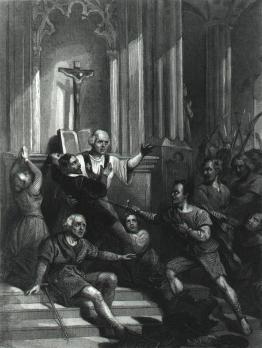
Bron/Source Photo: Chronik Familien Verband “von Drathen” 1928
Emmerik van Druten, killed in the church at Leeuwen 1354

Site is translated by my friend Johan Henzen, Australië .

